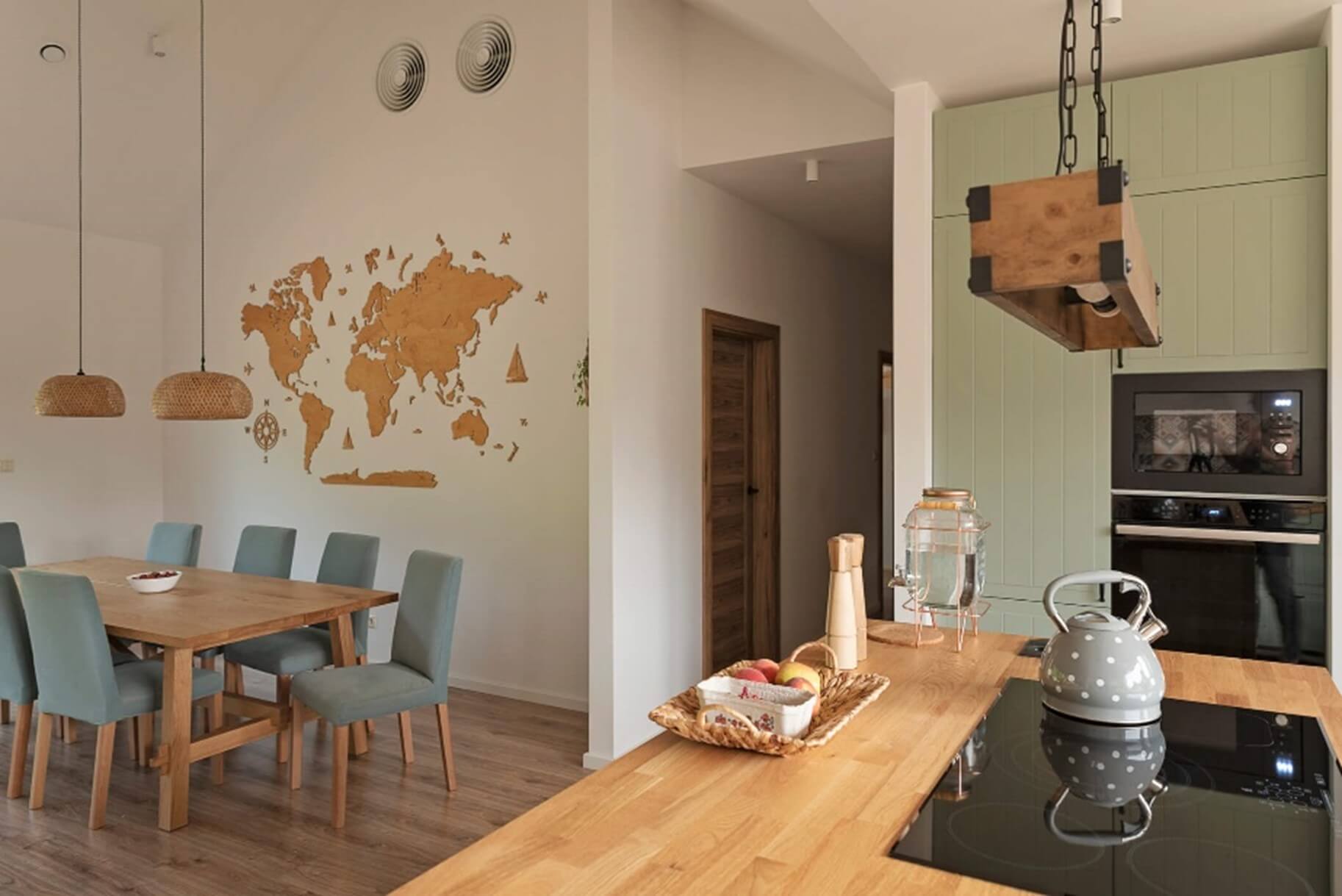Eco-Friendly Kitchen Remodeling Materials and Practices
Sustainable kitchen remodeling is a trend aimed at conserving water, reducing energy consumption, and lowering your carbon footprint. Incorporating eco-friendly materials and green kitchen practices does not mean sacrificing beauty or functionality. On the contrary, some of the best kitchen designs in Northern Arizona use the techniques outlined below. So, whether you’re planning a complete overhaul or just a few updates, follow these nine steps to help you achieve an eco-friendly kitchen remodel.
Step 1: Choose Sustainable Materials for Your Kitchen
The materials you choose to remodel your kitchen may have a large or small environmental footprint. To minimize your impact, start by selecting sustainably sourced or recycled materials. For example, countertops made from recycled glass or paper are both eco-friendly and durable. Another excellent choice is FSC-certified wood cabinetry sourced from responsibly managed forests.
Step 2: Focus on Water Efficiency
The kitchen is one of the highest water-use rooms in the house. Installing low-flow faucets and fixtures creates a more eco-friendly kitchen. Look for products that have earned the WaterSense label, which guarantees that the fixture uses at least 20% less water than standard models. This small change can make a big difference in your home’s water usage and contribute to long-term sustainability.
Step 3: Use VOC-Free Paints & Finishes
Some paints, finishes, and coatings contain volatile organic compounds (VOCs) that off-gas harmful chemicals into your indoor air. To boost the air quality, opt for low- or no-VOC paint for your walls and ceilings. These products release few, if any, toxic emissions, making your kitchen safer and healthier. Then, use natural finishes and sealants that prove effective and non-toxic for your cabinets and countertops.
Step 4: Install Energy-Efficient Lighting
Lighting is a big part of your kitchen’s energy consumption. Maximize natural light by adding windows or skylights where feasible, reducing the need for artificial lighting during the day. Then, switch to LED bulbs or swap out traditional recessed lights for surface mount LEDs, which use up to 75% less energy and last significantly longer.
Step 5: Opt for Energy-Efficient Appliances
Kitchen appliances are a major source of energy consumption. Upgrading to Energy Star-rated appliances can greatly reduce your kitchen’s energy use. Modern refrigerators, dishwashers, and ovens aren’t just more energy efficient—they also often come with high-tech features that make your life easier.
For instance, smart refrigerators allow you to check the contents of your fridge from your smartphone while grocery shopping. Smart dishwashers can be controlled remotely through an app, so you can start, stop, or monitor your wash cycle from anywhere. And smart ovens are equipped with Wi-Fi connectivity, allowing you to preheat, adjust the temperature, or monitor cooking progress remotely.
Step 6: Select Eco-Friendly Flooring
Your kitchen floors should be durable and environmentally responsible. Cork and bamboo are excellent materials because cork oak trees and bamboo plants grow quickly and abundantly. Also, consider reclaimed wood floors to reduce the demand for new materials while adding character to your kitchen. If you want a classic tile look, choose options made from recycled content for a unique and environmentally friendly alternative to traditional porcelain tiles.
Step 7: Prioritize Waste Reduction
During your remodel, focus on reducing construction waste by reusing and recycling materials whenever possible. Many items, such as metal hardware, wooden cabinets, and appliances, can be donated or recycled instead of being sent to the landfill. This minimizes waste and supports a circular economy, where materials are kept in use for as long as possible.
Step 8: Install Proper Ventilation
Good ventilation via a high-quality range hood reduces indoor air pollution by venting cooking fumes and airborne particles outside. This feature is especially important if you have gas appliances, which can release harmful combustion byproducts into your kitchen. On that note, opt for electric appliances whenever possible to avoid air quality concerns and pair nicely with solar panels.
Step 9: Work with a Green Contractor
Tie it all together by partnering with a contractor that specializes in eco-friendly construction. A green contractor has experience with sustainable materials, energy-efficient fixtures, and eco-friendly waste reduction practices to make your kitchen remodel as environmentally responsible as possible. You’ll get expert assistance sourcing materials and choosing sustainable options that align with your vision.
Choose Re-Bath & Kitchens for Your Eco-Friendly Remodel
Re-Bath & Kitchens has been serving the Phoenix area since 2010, bringing over 40 years of industry experience to every project. Our professional team offers a complete start-to-finish renovation process to ensure your eco-friendly kitchen remodel exceeds your expectations. We also provide flexible financing options to make your dream kitchen a reality without stretching your budget. Contact us today for a free kitchen remodeling consultation in Peoria, Scottsdale, or Prescott Valley, AZ.



